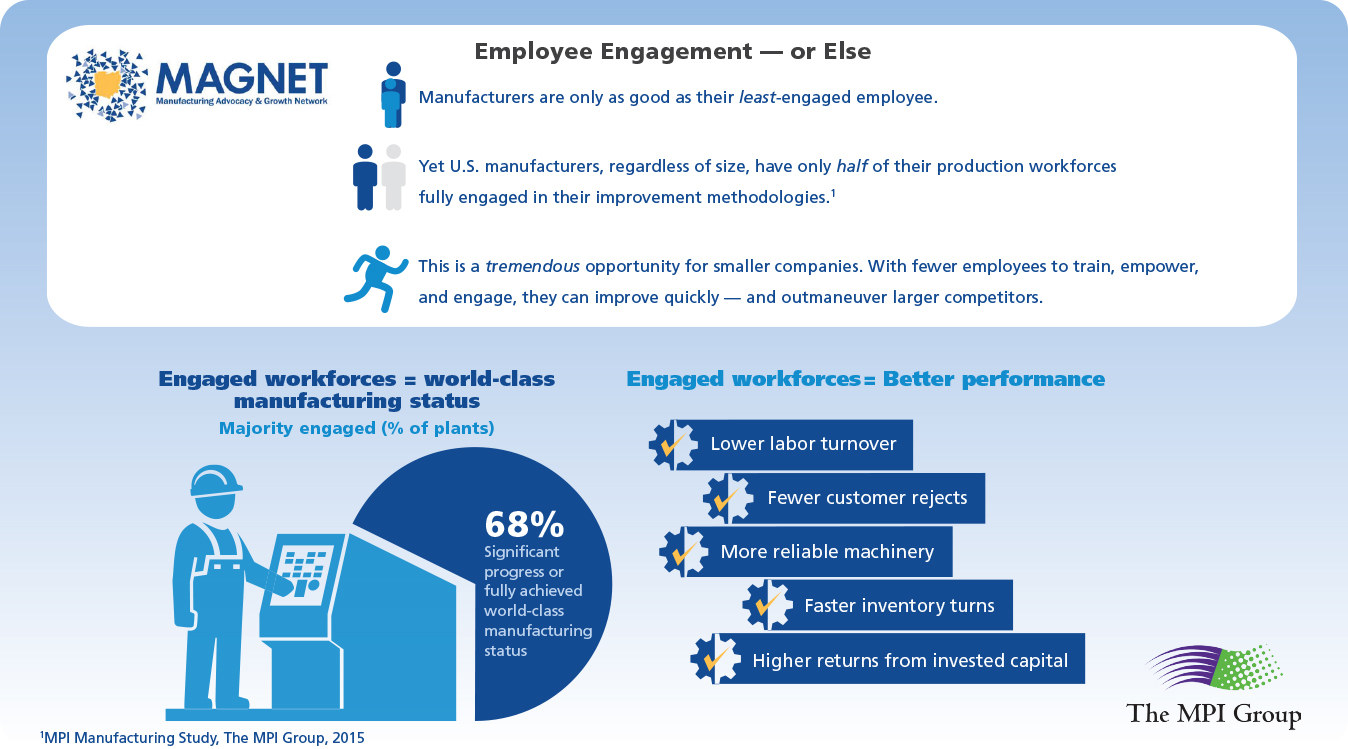Your organization can’t perform better than your least-engaged employee. Why?
- Equipment problems are ignored by unskilled workers who don’t have the training to fix them.
- Defective products are shipped by disaffected associates who have no incentive to catch errors.
- Dissatisfied customers become even angrier when powerless service representatives don’t have the authority to help them.
- Each of your employees has thousands of opportunities to identify and fix problems every year, whether on the plant floor or in the office. Yet manufacturers report that only half of their workforces are fully engaged in their improvement methodologies, such as lean or six sigma.[1]
Just as surprising: Poor levels of engagement are common across manufacturing, at companies both big and small (see infographic). This offers a rare advantage to smaller companies — with fewer employees to train, empower, and engage in their methodologies — for rapid improvement and competitive advantage.
That’s the good news.
The bad news is this: Far too many leaders — at companies of all sizes —jealously guard the authority to make changes and become production heroes. In fact, a full 25 percent of manufacturers describe the breadth and depth of adoption of their improvement methodologies as “none” or “minimal.”
The worst news of all, though, is the price these leaders pay for wasting their employees’ talent and enthusiasm. Manufacturers with workforces engaged in their improvement methodologies are far more likely to achieve world-class manufacturing status (68 percent).[2] Conversely, only 16% of plants with no employees engaged in their improvement methodologies have achieved world-class manufacturing status.
Engaged employees = A chance at world-class manufacturing status (and world-class profits).
What you waiting for?
[1] All data from the MPI Manufacturing Study, The MPI Group, 2015.
[2] “Significant progress” toward or “fully achieved” world-class manufacturing status.


